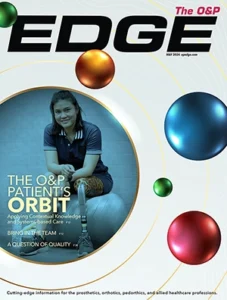In a prospective study, a research team demonstrated that axial-plane parameters and their correction are related to the successful treatment of adolescent idiopathic scoliosis (AIS).
A prospective longitudinal cohort study included patients with AIS who were 10 to 15 years old, had skeletal immaturity (0 to 2 on the Risser scale or R6 U5 or below on the Distal Radius Ulnar Classification), were less than one year post-menarche, had a Cobb angle of 25 to 40 degrees. The study was conducted from the time the patient began wearing the brace through a minimum follow-up of two years or until a surgical procedure was performed. Fifty-three patients were enrolled, and 46 patients were included in the analysis.
Radiographs and an imaging system were used to reconstruct 3D images of the spine at the pre-brace, immediate in-brace, one-year in-brace, and the latest follow-up out-of-brace stages.
All patients received a rigid TLSO fabricated from the molded cast by negative casting or with use of CAD/CAM, which was prescribed to be worn for a minimum of 18 hours per day and included compliance monitors. Braces were deemed effective if the immediate in-brace Cobb angle was comparable with the supine Cobb angle.
Statistical analysis determined the association between axial rotation correction and curve progression at the time of the latest follow-up, and to model the probability of risk of progression.
At the time of the latest follow-up, 30 patients did not experience curve progression and 16 patients had curve progression. There was no difference in baseline demographic characteristics between the groups.
For the transverse-plane parameters, there was a significant difference between non-progression and progression groups in pre-brace apical vertebral rotation (4.5 degrees ± 11.2 degree, compared with -2.4 degrees ± 9.8 degrees, respectively), and in one-year in-brace apical vertebral rotation correction velocity (2.0 degrees ± 5.0 degrees/year compared with -1.7 degrees ± 4.4 degrees/year, respectively).
Logistic regression analysis showed that pre-brace apical vertebral rotation and one-year in-brace apical vertebral rotation correction velocity were associated with an increased risk of curve progression.
There was no difference in Scoliosis Research Society 22-Item scores between patients who experienced curve progression and those who did not.
The open-access study, Brace Effectiveness Is Related to 3-Dimensional Plane Parameters in Patients with Adolescent Idiopathic Scoliosis, was published in The Journal of Bone and Joint Surgery.




